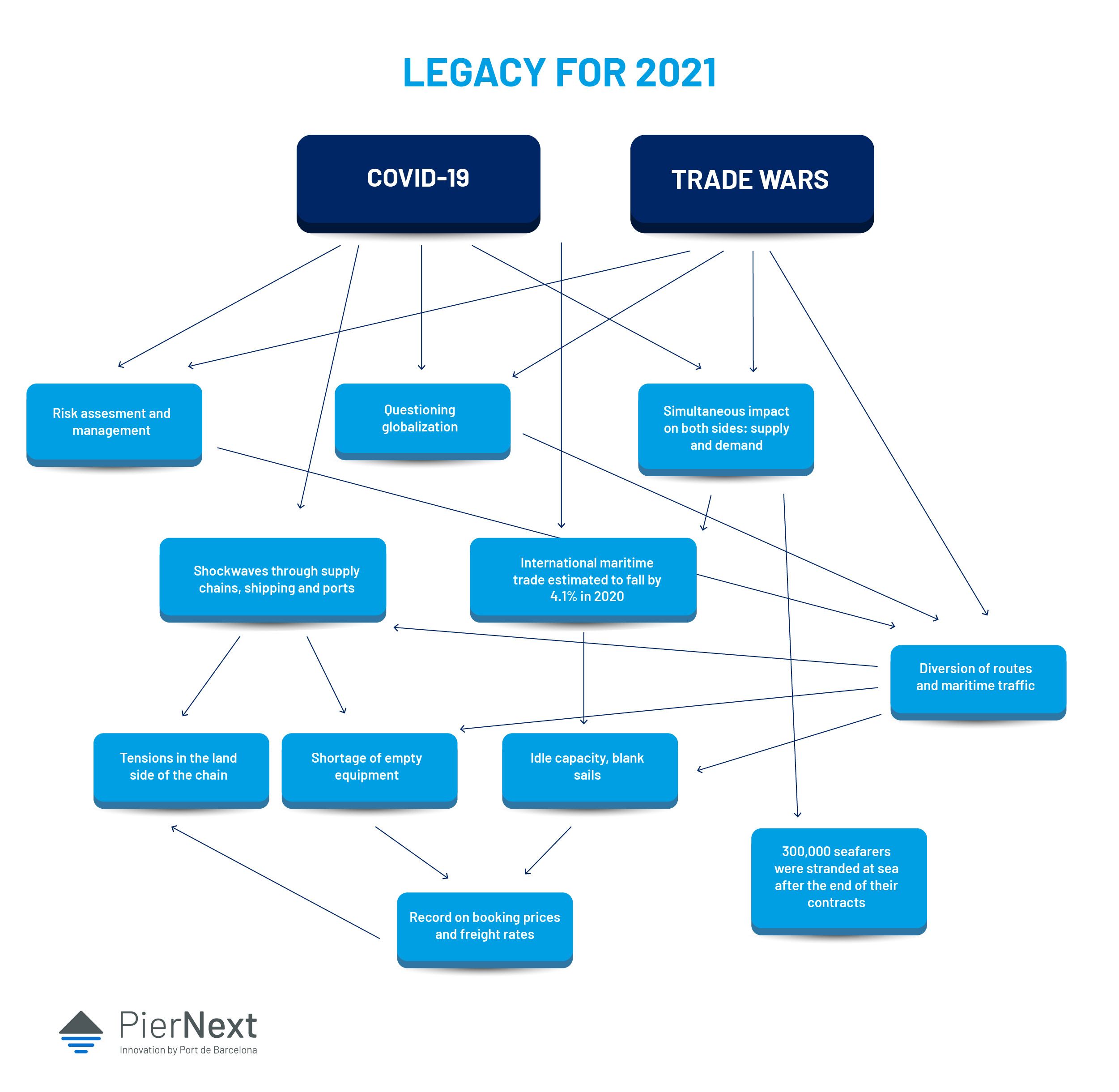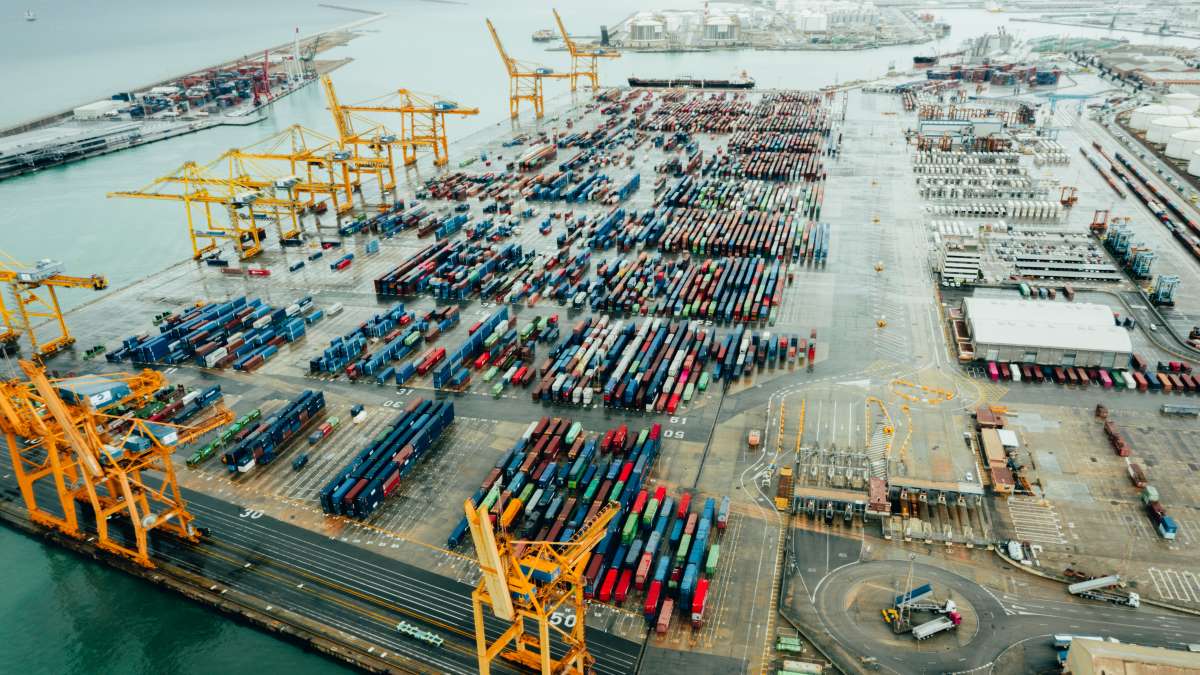 COVID-19 has accelerated the implementation of practices that have best responded to the crisis. (Getty Images)
COVID-19 has accelerated the implementation of practices that have best responded to the crisis. (Getty Images)
A year to rise to the surface: port trends for 2021
After a year marked by the coronavirus pandemic which has altered the dynamics of all sectors, including the maritime, 2021 is planned to be not only the year to recover, but the year that will redefine the priorities and objectives for the short and medium terms, encompassed in a series of trends that will take hold in the next 12 months.
 COVID-19 has accelerated the implementation of practices that have best responded to the crisis. (Getty Images)
COVID-19 has accelerated the implementation of practices that have best responded to the crisis. (Getty Images)
In its report 'COVID-19 and maritime transport: Impact and responses', the United Nations Conference on Trade and Development (UNCTAD) sends a positive message for 2021, in which it expects maritime trade to grow by 4.8% after falling by 4.1 % in 2020. But it also remarks that it will not be a linear recovery where everything will carry on as it was. The COVID-19 pandemic, in addition to causing health and economic damages, has forced the implementation of standard measures based on the practices that have best responded to the challenges posed by the crisis. And, in addition, it has accelerated relevant strategic and technological changes.
Thus, recovery is expected to be uneven, with a slower evolution for some traffics than for others, and with a different variation depending on the region. For example, cruise ships, one of the most affected sectors, expect to resume their activity in late spring or early summer, as long as the vaccination rates are adequate and the expansion of new waves of the pandemic are contained.
The commercial recovery of ports
Considered an essential service, port activity continued during the most acute months of the pandemic. Following the experience of 2020, ports have established contingency plans to face the new year. As UNCTAD points out, there were no major operational delays globally, either during lockdown or the new normal. Many terminals have adopted telematic reservation systems, an agile measure which is a direct consequence of the pandemic.
UNCTAD forecasts that maritime trade will grow 4.8% in 2021, a year that will serve to strengthen technologies that improve the operational capacity and sustainability of the sector
UNCTAD points out that another measure has been the development of better communication lines between port stakeholders. In this sense, some ports have promoted emergency control plans managed and monitored by internal committees, while others have developed more elaborate structures that include various subcommittees or the dialogue with government officials and other agents from the sector, which has strengthened collaboration between institutions.
Other ports have worked, together with agents of the supply chain, on scenarios that analyze the impact on operational and economic volumes caused by the pandemic. In this sense, as Carles Mayol, Commercial Manager of the Port of Barcelona explains, import traffic from certain sectors already shows signs of recovery, as well as Asian exports in general.

Readjusting services
From a commercial point of view, COVID-19 will continue to impact the sector, at least during the first quarter of the year, and probably more for some sectors. As Mayol explains, the shipowners, unlike during the 2008 financial crisis, have adjusted their offer based on the cancellations of services and blank sailings, which has generated, and will continue to generate, tensions in the supply and demand cycles. “Currently, no increase in the warehouse, space or recovery of the canceled services has been announced until, at least, April 2021,” he explains.
During 2020, cargo volumes decreased but the same did not happen with freight rates, as shipping companies adjusted the volume by reducing their capacity through the aforementioned blank sailings, cutting costs and taking advantage of the drop in fuel prices to focus on profitability and not market share. This strategy will continue in 2021.
The consequence is an unusual increase in freight rates, which have experienced increases never seen before in the sector and, in some cases, have even tripled. In the first week of 2021, the average price of freight from Asia was around $ 5,000 for a 40-foot container, when in December 2019 it was priced at about $ 1,500.
This increase may become more acute in the early stages of 2021 and the new prices will have to be integrated into supply chains and will have an impact on end customers. It is worth mentioning that low unit cost products are responding worse to this price increase and, in some cases, accumulations are taking place at origin while freight prices are expected to fall to more manageable values.
The accumulations of cargo in certain points, the reduction of the maritime supply, and the increase in prices have had a collateral effect that is the volatility and difficulty of obtaining empty equipment and containers in certain geographical areas, which reduces the ability to access the maritime supply, congests ports and triggers prices again.
Despite this outlook, it is expected that the effect of the recovery in Chinese exports, despite an expected slowdown in demand for this year, could ease pressure on logistics chains and help contain prices.
Jordi Torrent, Head of Strategy for the Port of Barcelona, also points out that trade and recovery can also benefit from a reduction in protectionism that has marked the relations between blocs in the last period, especially relations between the United States (US) and China. The results of the US elections can be a positive boost to international trade.

Sustainability and digitalization
Whatever the conjunctural situation is for what is left of the pandemic and its impact on the world economy, maritime traffic will be sustainable or it will not be. The Marine Environment Protection Committee (MEPC), of the International Maritime Organization (IMO), met at the end of 2020 to consolidate in 2021 the commitment to reduce CO2 emissions by 40%, (compared to 2008 figures) in 2030. The European Union has adopted a similar measure to encourage the EU Emissions Trading System, whose objectives are even more rigorous than those of the MEPC.
These two initiatives send a very clear message to shipping and logistics companies: they must prepare to adopt policies related to climate change. This implies an economic increase for carriers, who will have to invest to transform their ships into more sustainable means of transport or risk receiving sanctions.
The IMO does not forget the working conditions of the seafarers, who had to stay ashore for months and whose conditions they hope to improve this year, or the possibility of consolidating logistical routes based on the proximity and speed of maritime traffic, as expert voices point out.
One of the main routes to reach these sustainability goals is undoubtedly digitalization, accelerated by the pandemic, which has proven to be a safe and effective solution during the crisis. Sharing data in a collaborative way is the first step and in this sense, the sector starts with an advantage because many agents already have platforms that allow them to exchange information. This should be the year in which digital platforms that allow open data sharing take effect.
Navis, the operations provider that belongs to Cargotec Corporation, ventures to launch its technological predictions for 2021. The first will be the confirmation of cloud-based technologies, which has allowed the consolidation of remote operations. According to a survey carried out by this provider, the interest in these technologies has increased by 40% compared to last year for its capacity to streamline the workflow, reduce costs and prioritize the safety of the personnel.
The use of artificial intelligence for maritime and inland logistics will also be key since its capacity for operational prediction and the collection and analysis of data allow all the agents of the value chain to make more relevant decisions for their businesses. This will be accompanied by the acceleration in the implementation of automation in the terminals, essential to maintain their competitiveness and increase productivity by improving security and reducing operating costs, but at the same time, it will balance port offers and reduce the differentiation between enclaves.
Technology will also be an ally to strengthen the sustainability of the logistics chain. The decrease in traffic volume during the first half of 2020 had a positive impact on air quality and the environment. For this reason, the consolidation of operational monitoring systems will be key to maximizing efficiency, as well as the preference for rail transport to the detriment of trucks.
The coming months will witness whether or not these trends are definitely settling in a sector that expects 2021 to be a very different year from the previous one.






